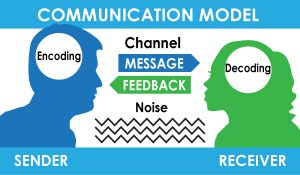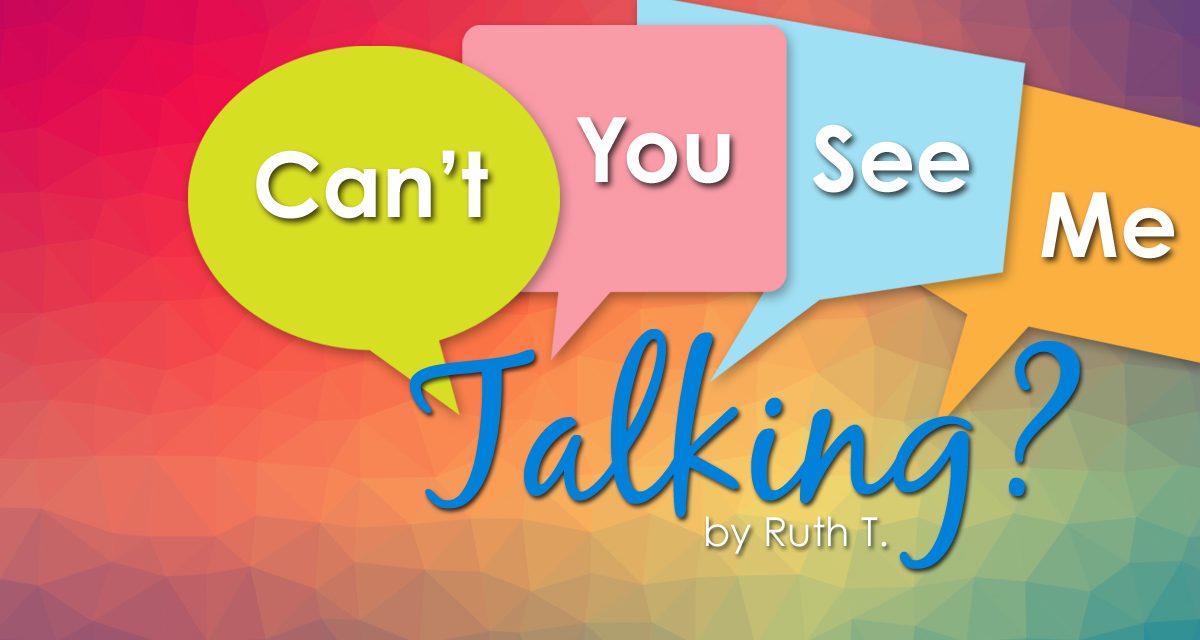“Mom, I need that thing.”
“What thing?”
“You know—that thing I use for the watchyemacallit.” Similar conversations occurred with one child or the other in multiple forms, multiple times a week–typically ending with each of us staring and making noises at each other in frustration. And behold: communication breakdown.
Then there was my 3-year-old brother who created his own word: lotherlotherlotherlaaa. It took a lot of guessing, pointing at things and asking questions to realize—finally—that he wanted the peanut butter.
Or perhaps you’ve found yourself saying, “Take out the garbage. . . . Yes, I mean you. . . . Yes, I mean now.
Communication: it’s vital. Communication breakdowns: they can run rampant.
Building Up and Not Breaking Down
One of our home school goals was to build effective communicators: in writing of course, but also verbally. Daily, we verbally communicate. It’s crucial to any interaction with other humans, and so we need to become skilled communicators. But in our family, when we were in the difficult conversation moment, trying to just figure each other out, “use this as a teaching moment,” was the farthest from my mind.
What are we talking about?
For effective communication, several different components must work well and work well together. Communication always includes a Sender, a Receiver, and the Message. As a Sender, you transmit (encode) your ideas to listeners (receivers) in ways that they can “decode” and understand. The listener/receiver sends back messages (called feedback) to let you know whether your message has been fully understood; they might use their nonverbal reactions, words, questions, etc.
The final dynamic in communication can cause a lot of breakdown: Noise! Noise is anything that interferes with the message or the feedback. Noise refers to a wide variety of things. For example, unfamiliar vocabulary, unusual pronunciation, an incomplete message, individual assumptions, environmental noise, etc., etc. The list of possible interferences can go on and on.

Use It to Improve it.
We must practice verbal communication to improve it—and intentionally. Mistakenly, we easily assume that people will always understand us and we will always understand them. In fact, to improve our communication we need to regularly engage in sending and receiving opportunities. Join us next week as we look at some informal and formal ways to practice communication, including games!
Just as there are informal and formal situations for communication, there are also formal and informal ways to practice. Informal speaking games provide a designated time to concentrate on and improve skills. Spice up your school day with some of these games that will practice communication skills at any age:
Good Ol’ Fashioned Practice
There are many ways to provide fun communication practice: read poetry or fun limericks aloud, pull discussion topics out of a hat; have children select a favorite children’s toy and convince others why those are “the best.” The sky’s the limit.
Try some easy-to-implement, tried-and-true games (you may know some of these by other names):
- Simon Says (for listening carefully): Select one person to be Simon and give out different commands to others. If they respond to the command without you saying, “Simon Says” at the beginning, they must sit out. Keep giving commands until the last one player is standing.
- Messenger Game (AKA telephone–for listening and speaking clearly): Players sit in a circle or a straight line. The first person whispers a word or phrase in the next person’s ear. Each person shares with the next person. The last person shares the message out loud. See how close to the original message you can get.
- How We Roll (for Impromptu practice): Give each child a list of 6 numbered questions. The questions can vary from child to child, if you like. You can use others’ questions, such as those from prewritten Conversation Cards. Or you can create questions to review your class subjects or to explore any theme or idea. As each player takes turns rolling the die, they will spontaneously answer the corresponding numbered question on their paper.
- My Name is Andy: (for “on-the-spot” skills–great traveling game). Using the alphabet as your guide, choose a name and what that person does. There are several variations, but we’ll start simply. For example, what the person eats: “My name is Andy and I eat apples;” or “My name is Beth and I love butter.” Skilled players can get elaborate: “My name is Andy and I eat apples with anacondas in Algeria….”
Don’t Reinvent the Wheel
As homeschool parents we might want some help getting those creative ideas started and there are lots of options.
Don’t wait until a child is older to reinforce speaking skills. Start early with 50 Speaking Activities (PK-3) if you’d like to practice retelling, interviewing, role play, following instructions, and more. If you’d like your young ones to practice talking on specific topics, try Speaking Board Games (PK-3) or the many options and flexibility available with The Art of Conversation Games (PK-AD).
Tell Me a Story
Storytelling is a very natural part of our human condition. We love to tell what’s happened. We love to hear stories. And the practice of storytelling improves many speaking and listening skills. But if we’re commanded, “Tell a Story!” we immediately get stage fright. Sometimes we need a bit of direction or key words to get us going. Story Cubes or Roll a Story games are portable, develop improvisation skills and provide lots of individual and group inspiration. How to Tell a Story is a game that uses a book to teach the elements of story and then use the blocks to build your story.
Let’s Get Formal
It will come time for your students to be formally instructed in communication. In traditional methodology, we tend to save this type of instruction for middle or high school students and call it “Speech” or “Debate” or “Rhetoric.”
But why wait until a student is older? Give students of all ages opportunities to speak and communicate within your learning environment. Students can dramatically read anything they’ve written. Have students do a Reader’s Theater of stories they’re reading. There are many ways to include oral skills easily as part of their curriculum. And some teaching methodologies naturally involve oral skills, such as Charlotte Mason or Classical Education. Simple supplements such as Public Speaking for Kids or Creative Communications Skills and Communicating with Confidence can dovetail nicely with your current courses. Of course, there are specified speech and communication courses to add in either as part of your English or elective courses.
Our current culture seems to be in constant combat against genuine “live” interpersonal communication. So, it’s vital to make opportunities for your children to communicate verbally. Encourage your entire family to talk it out!





